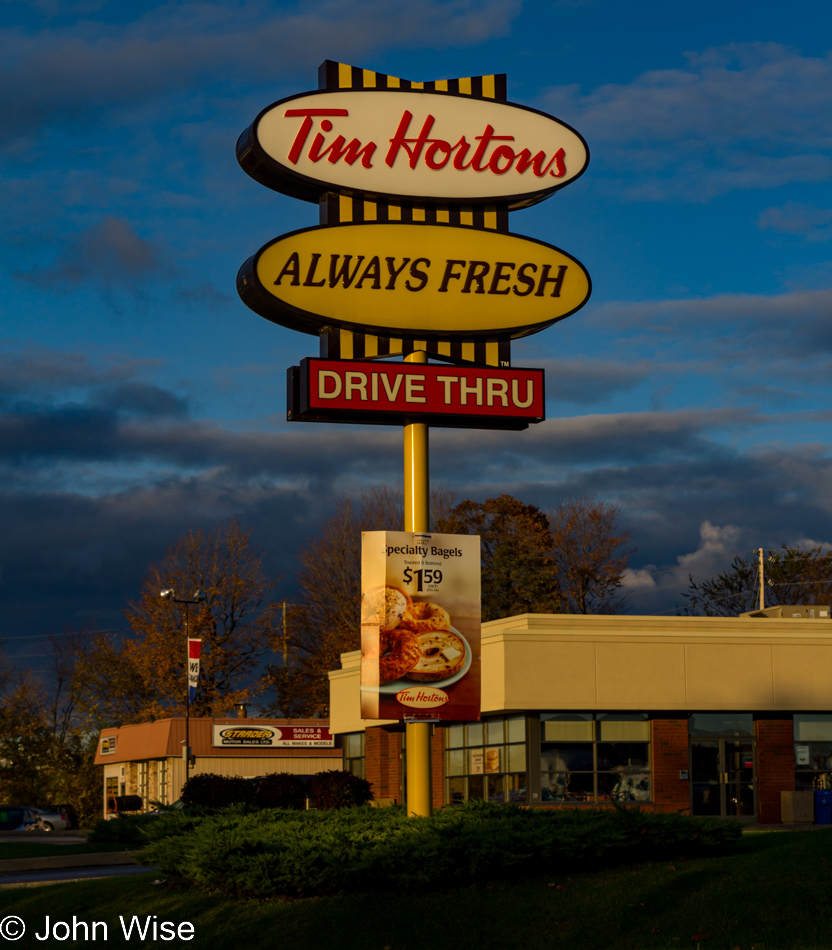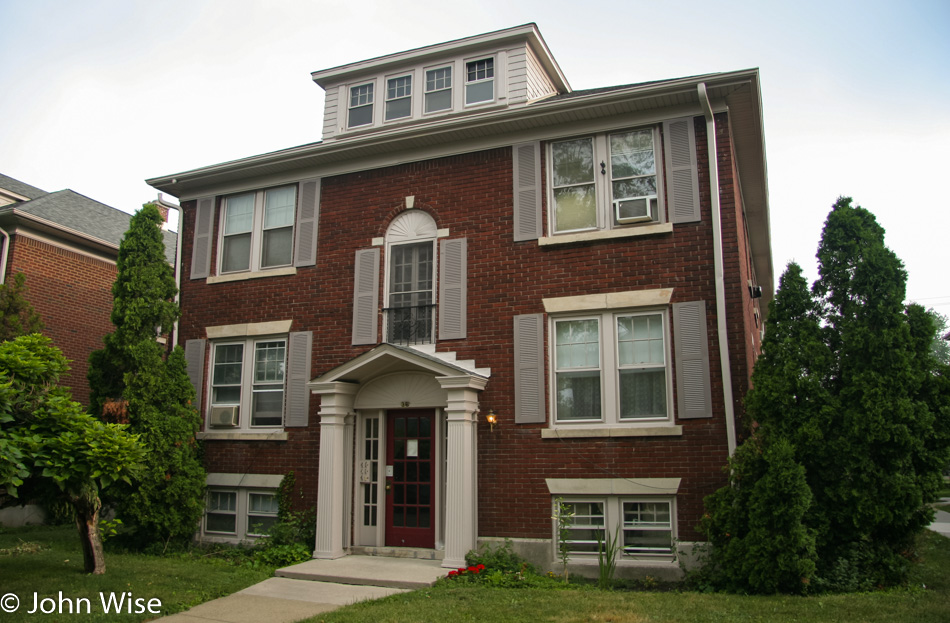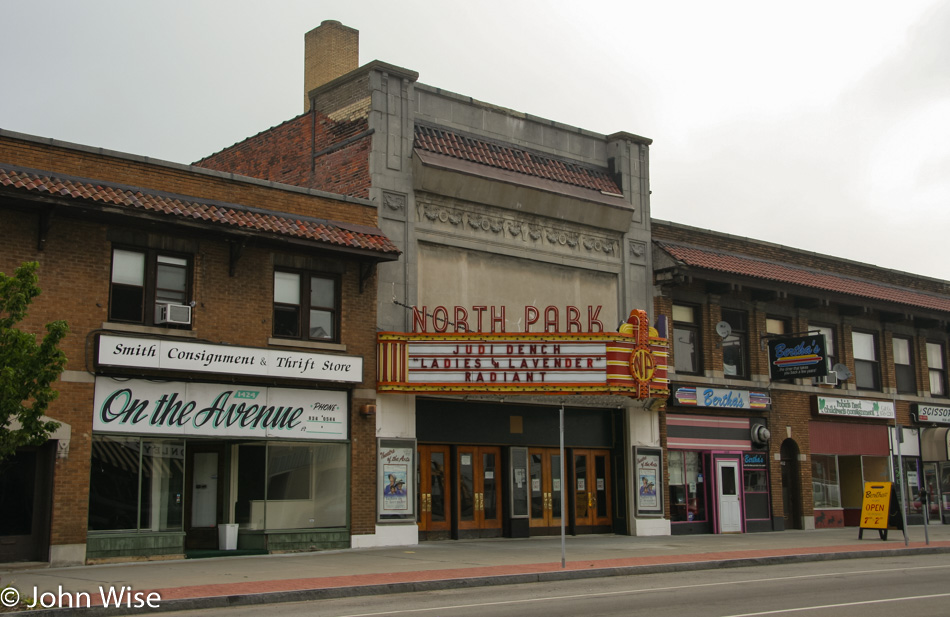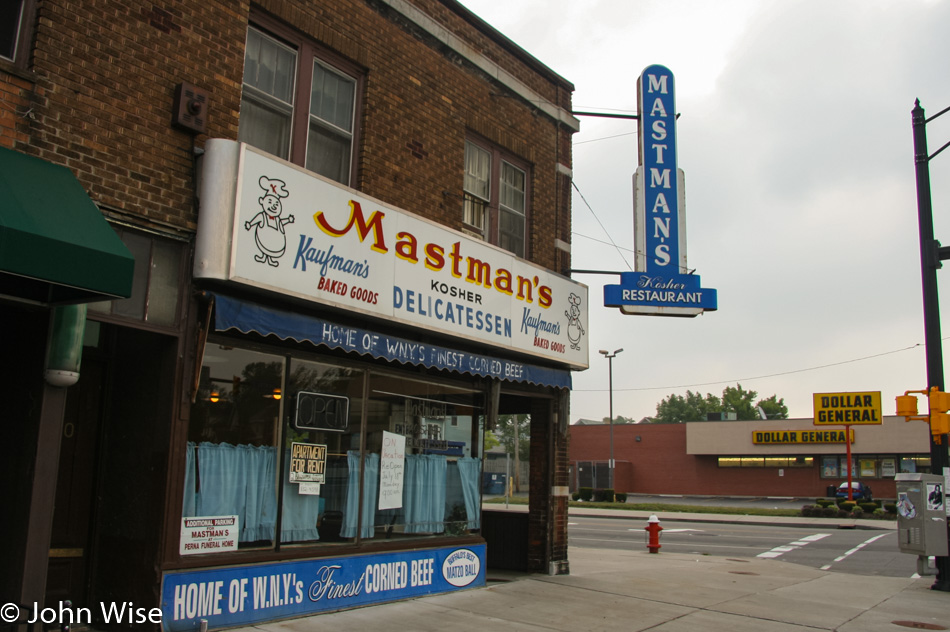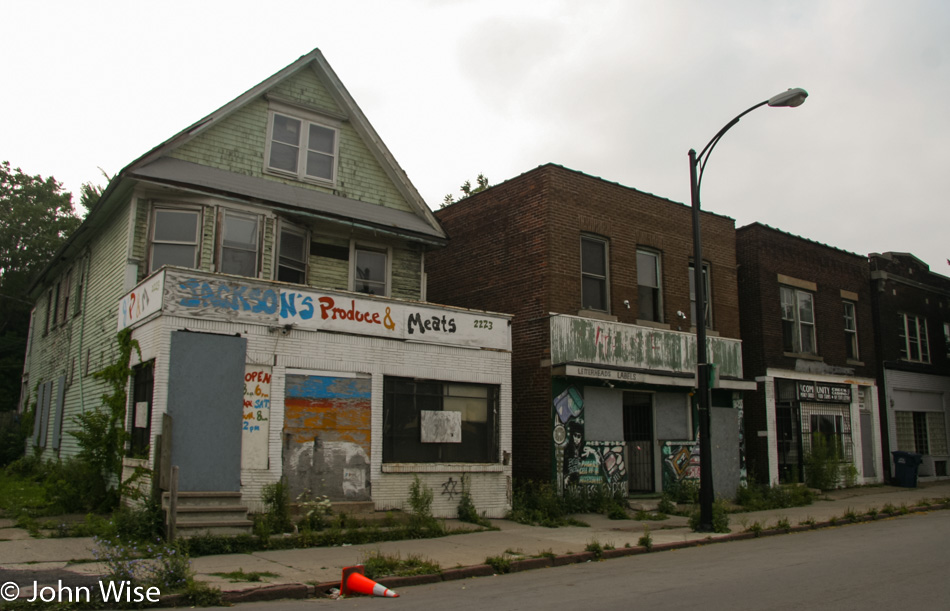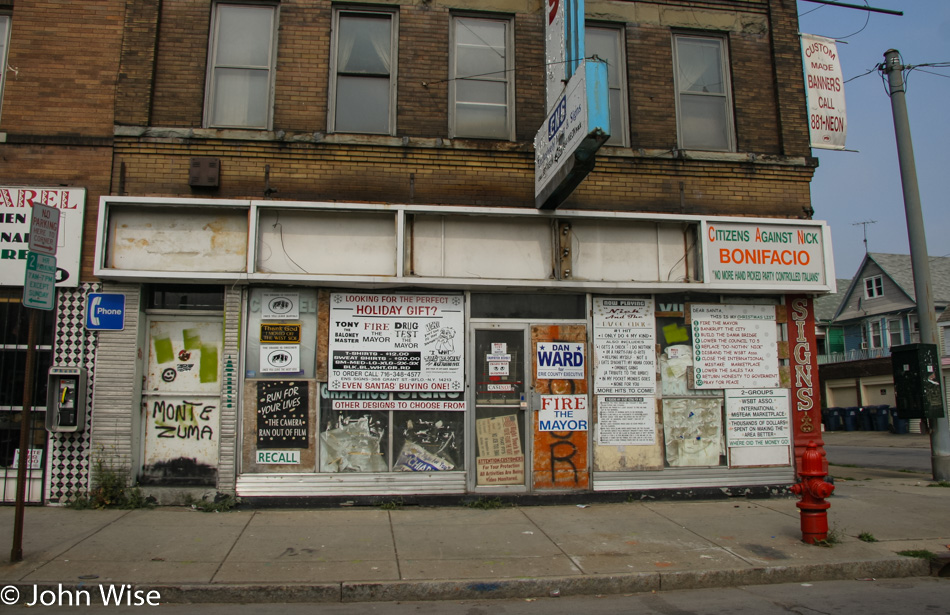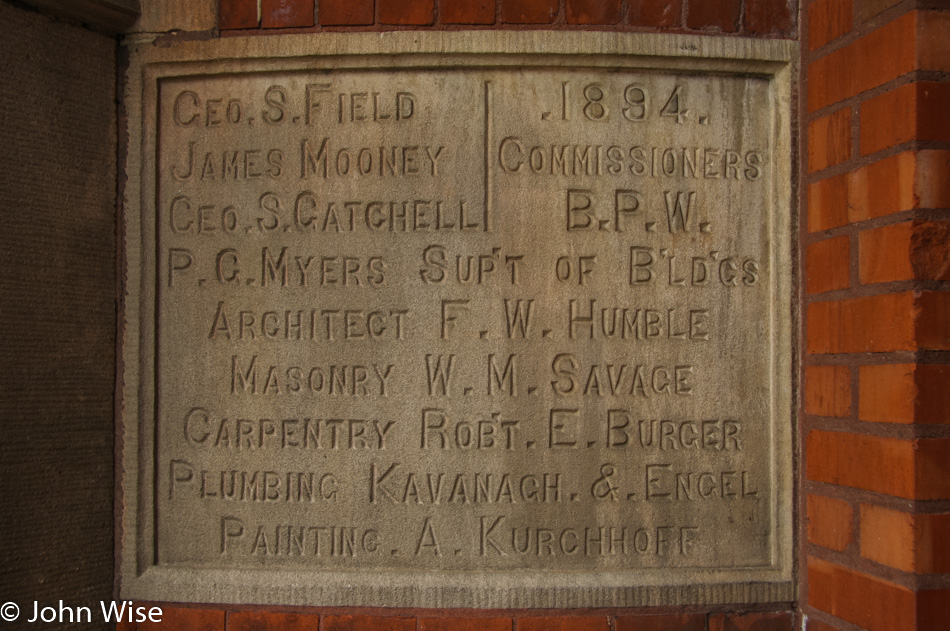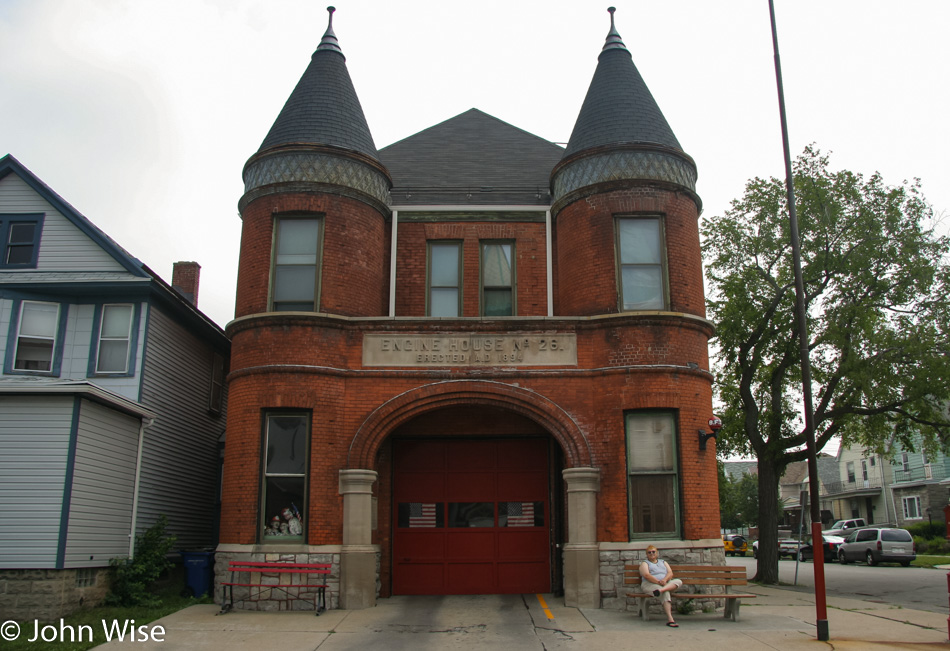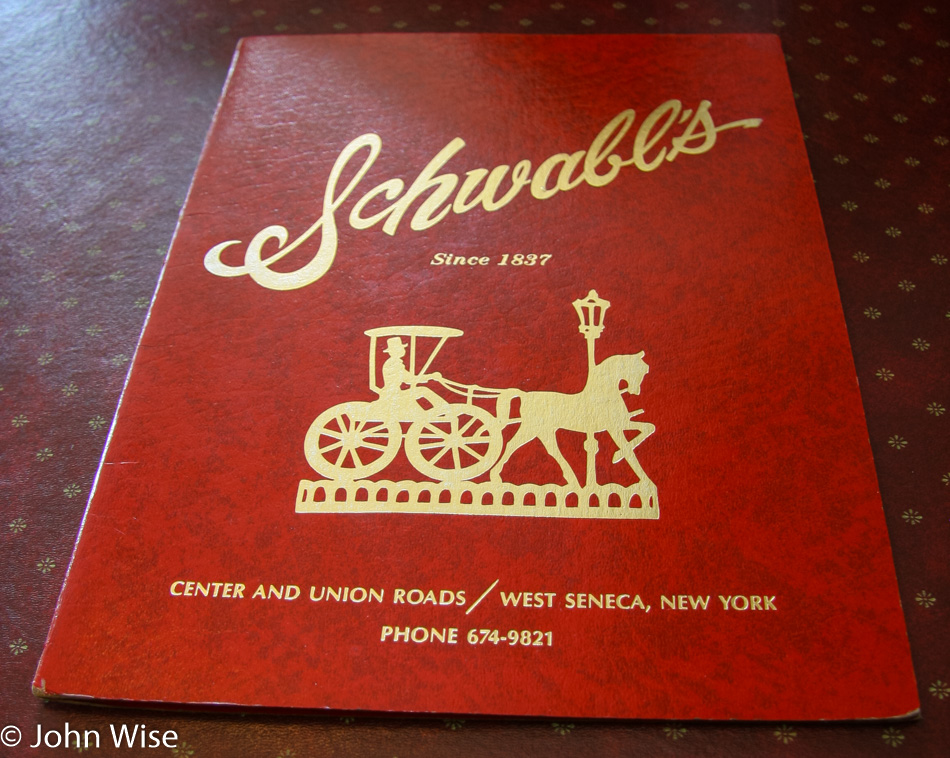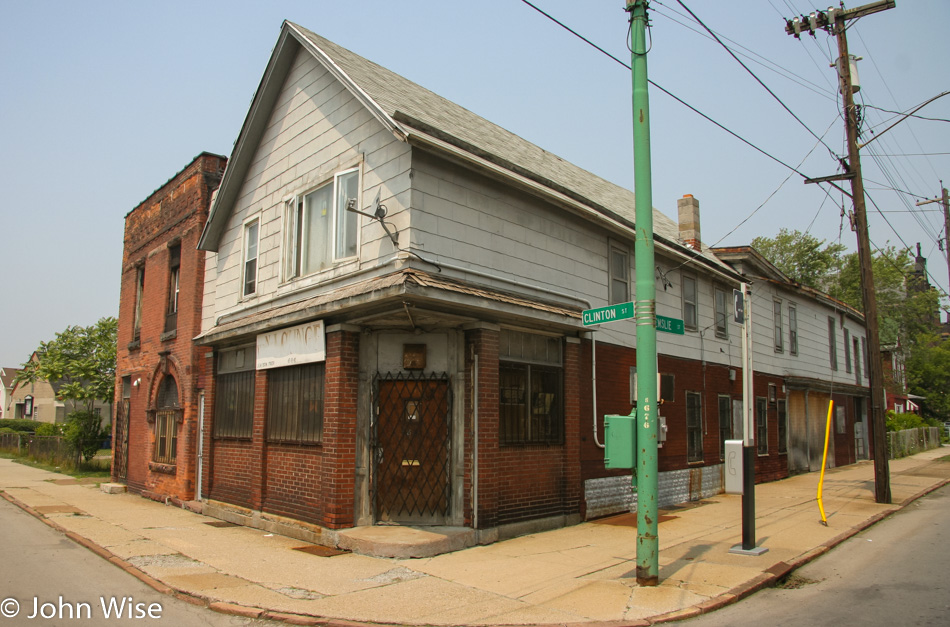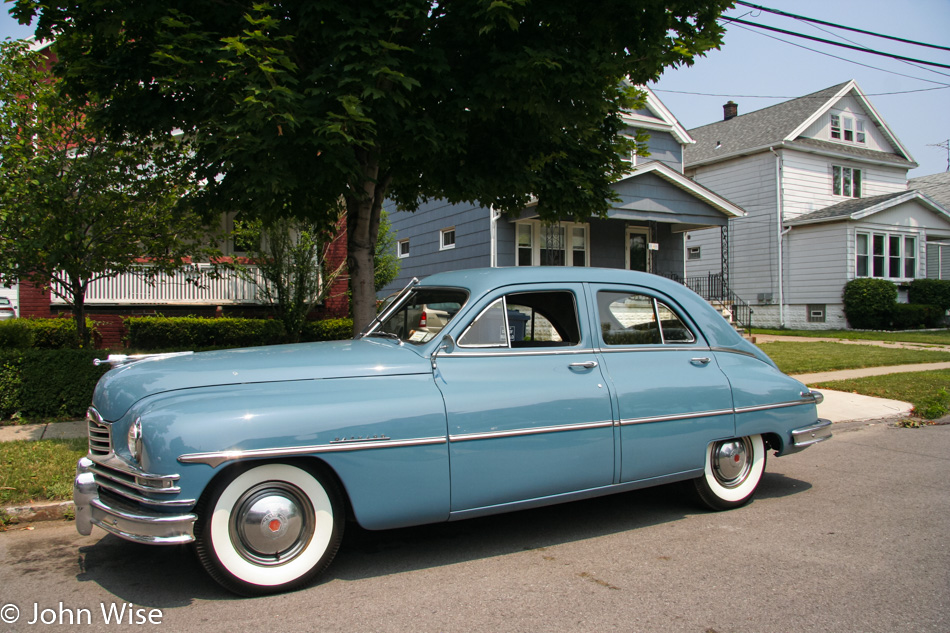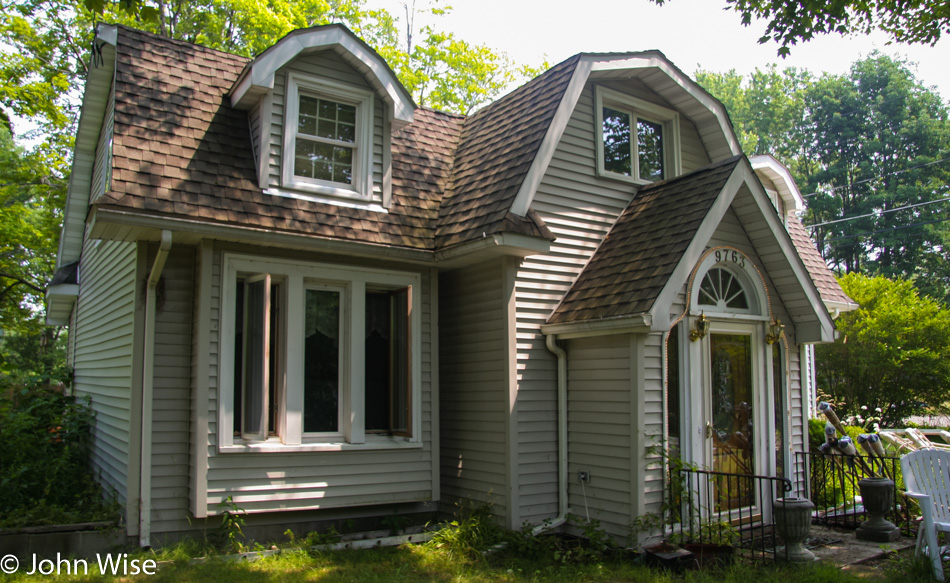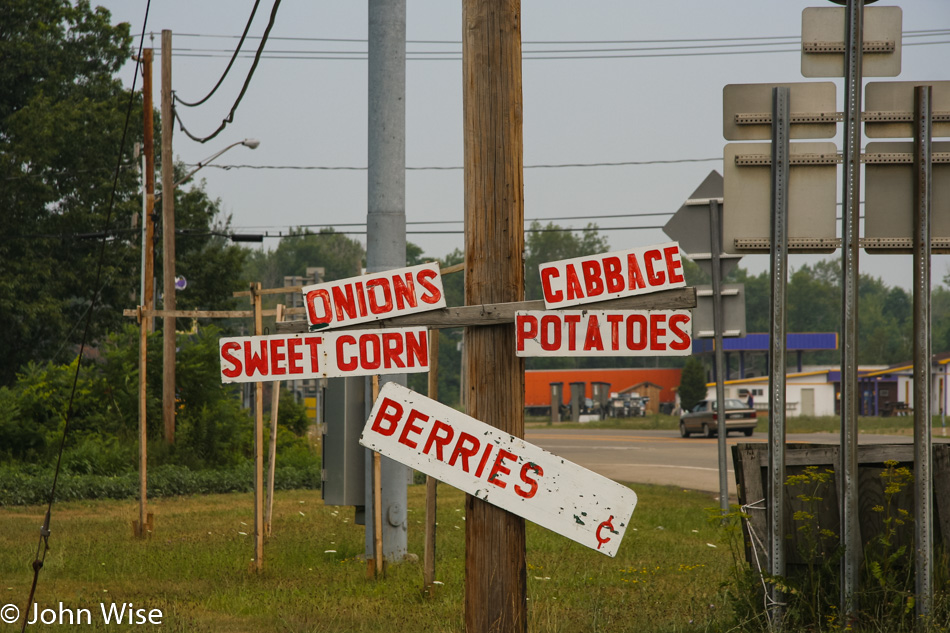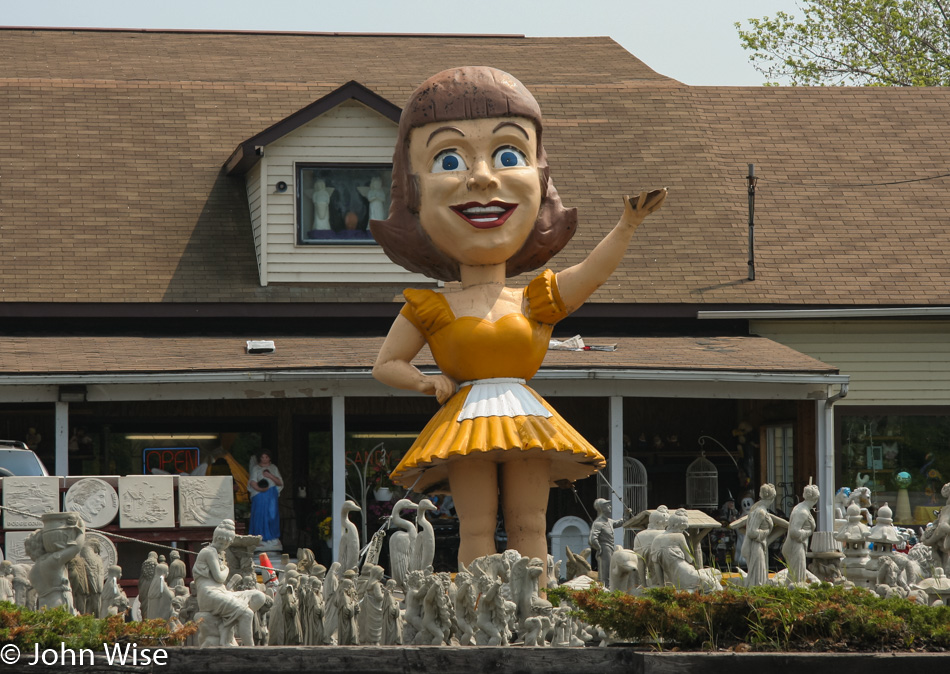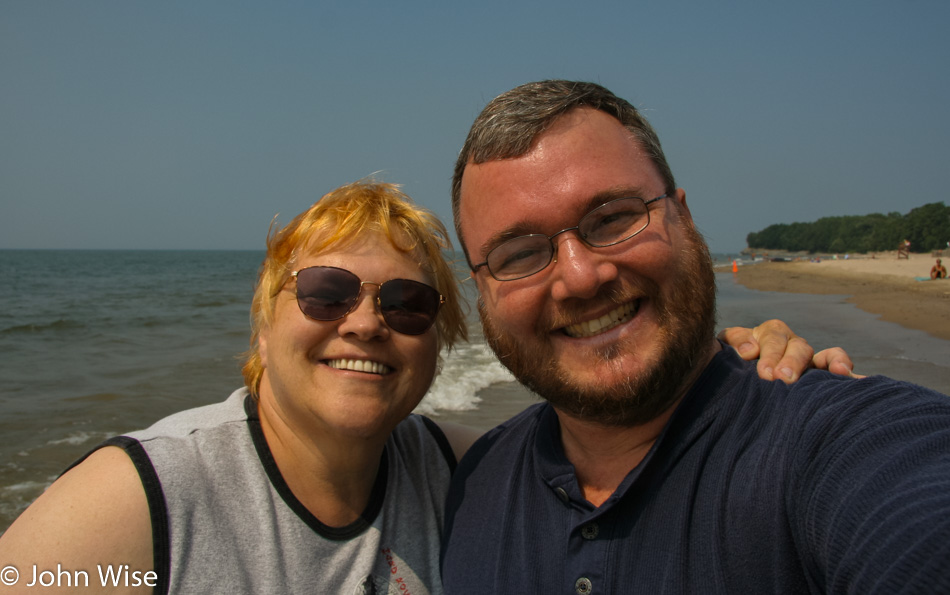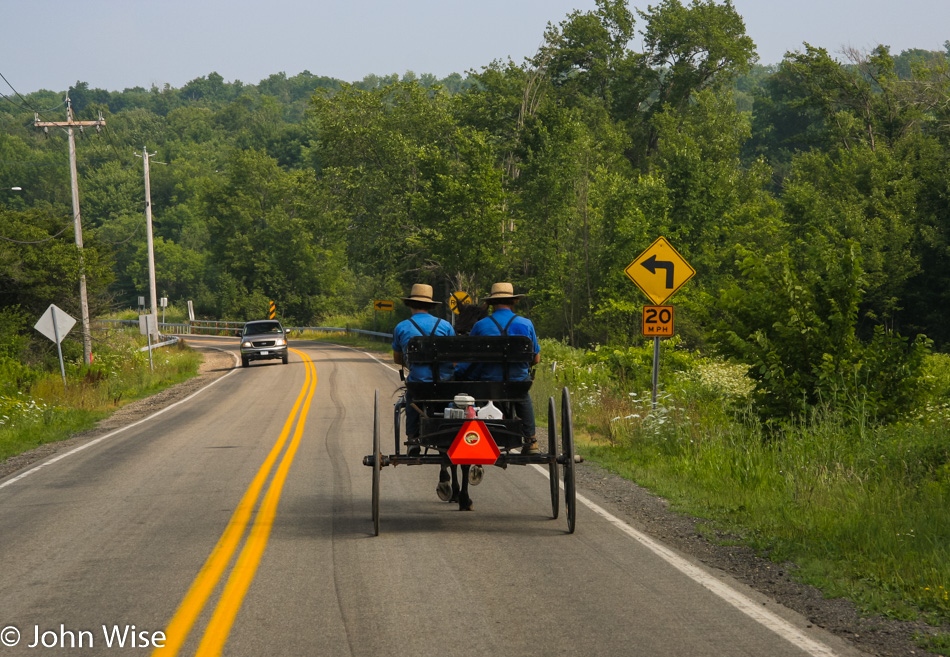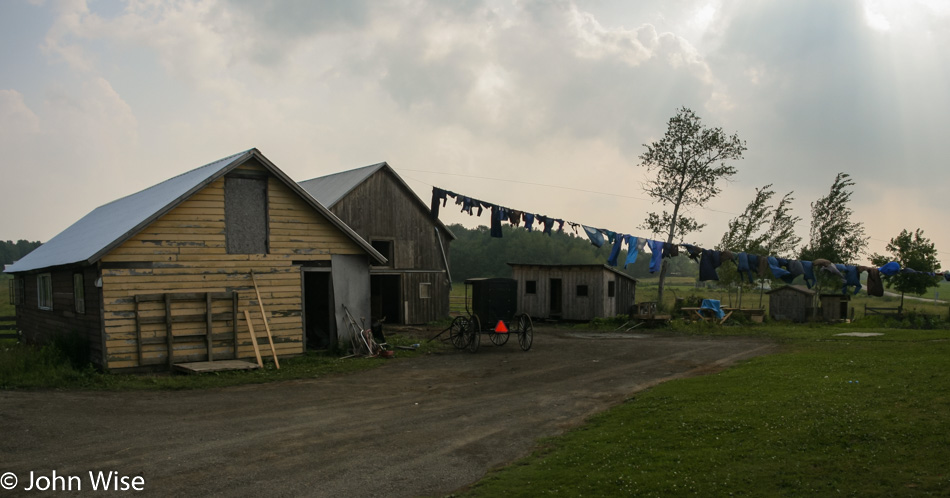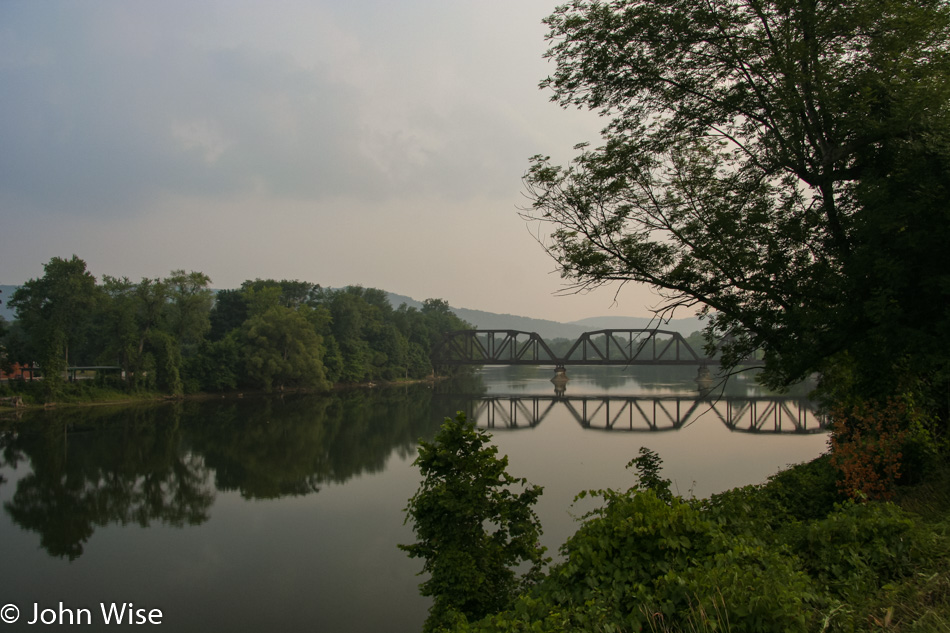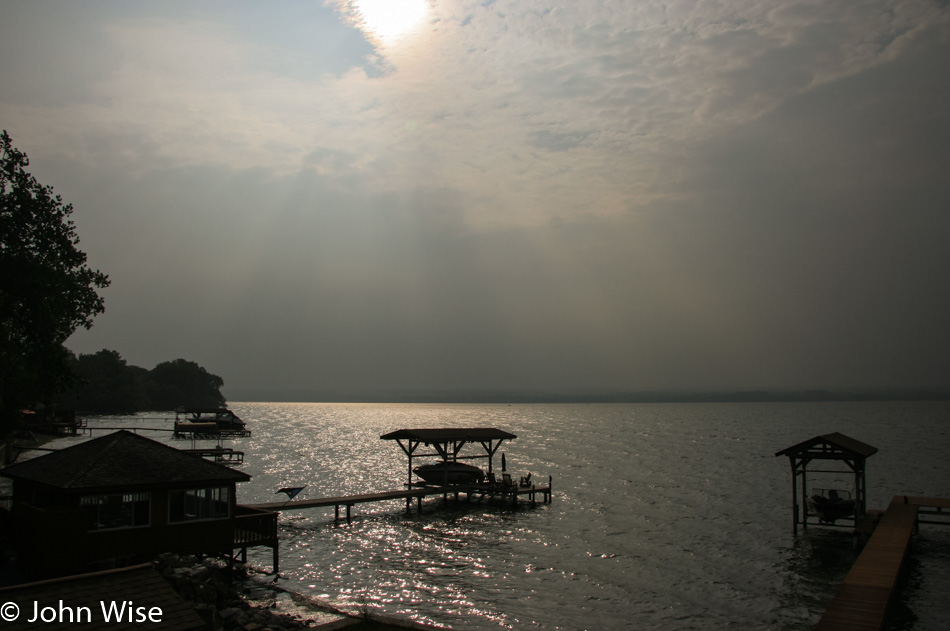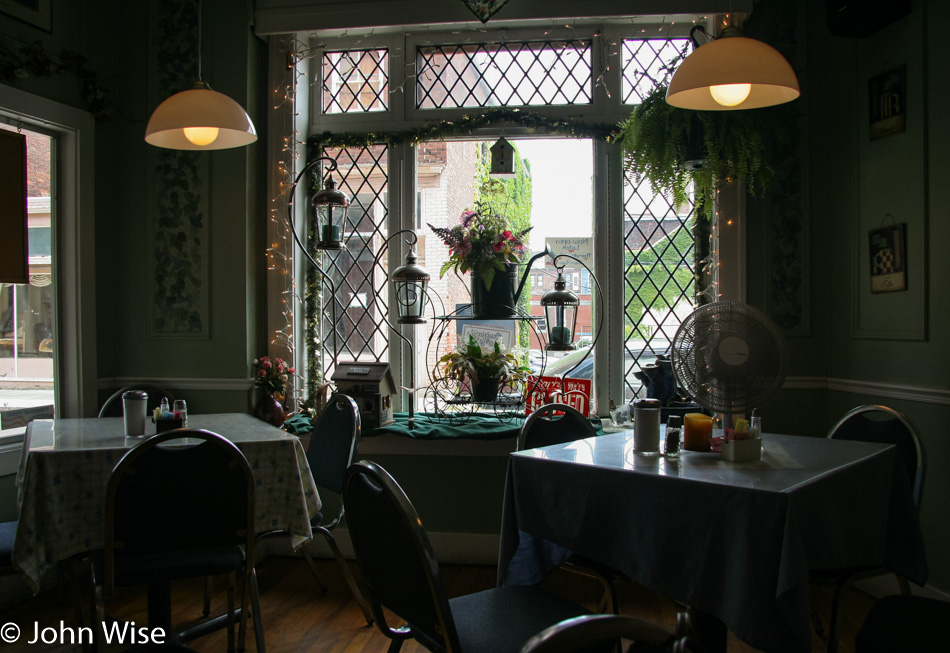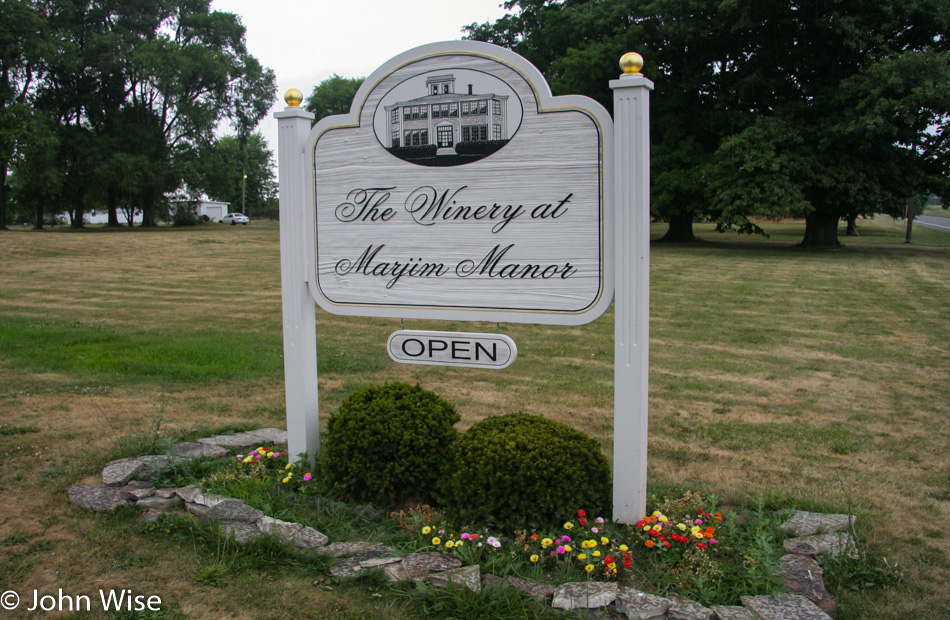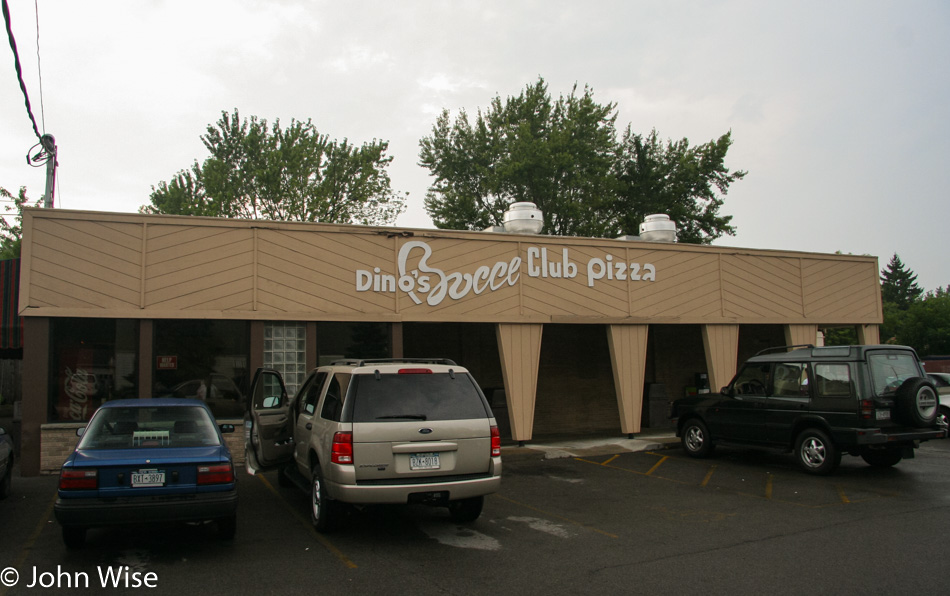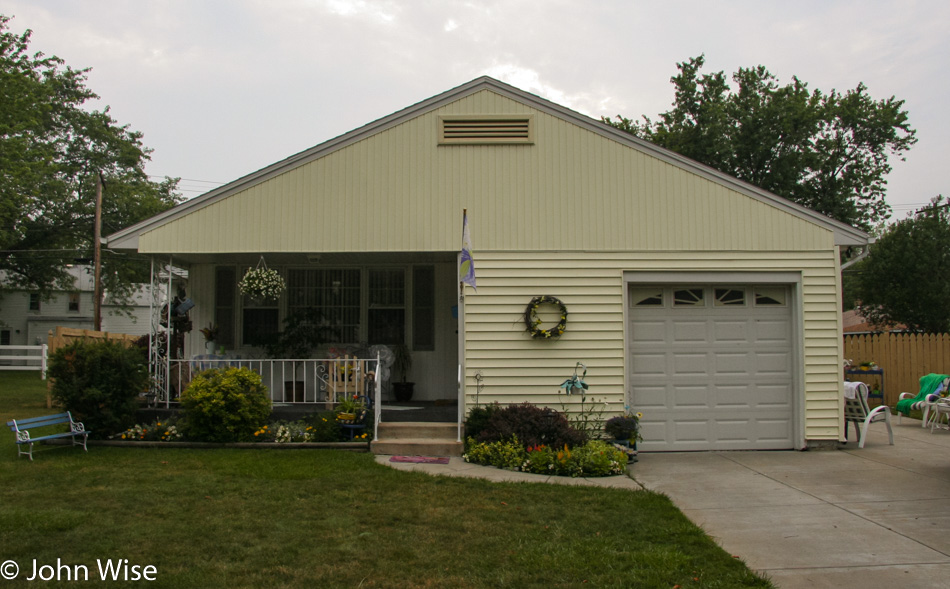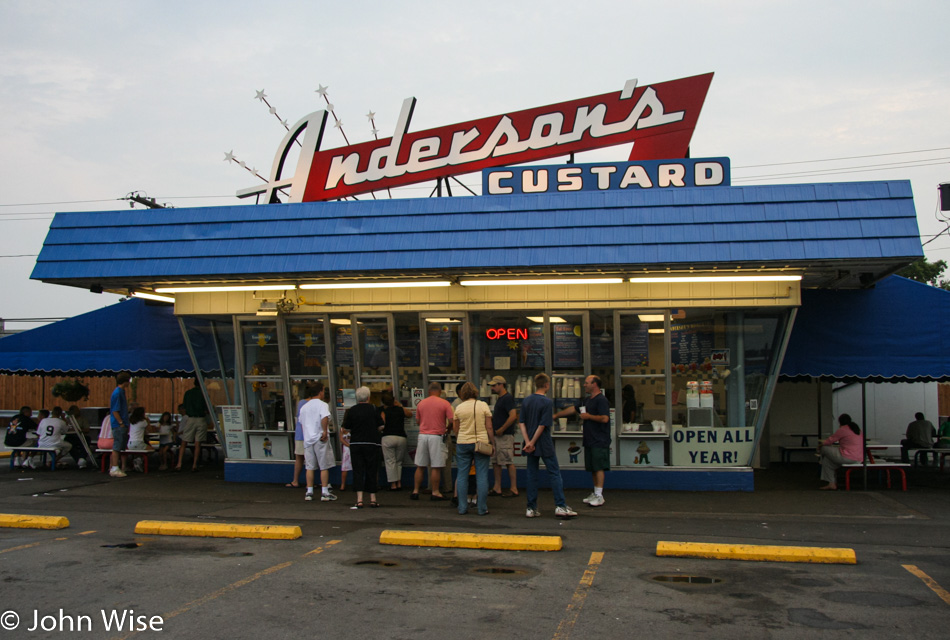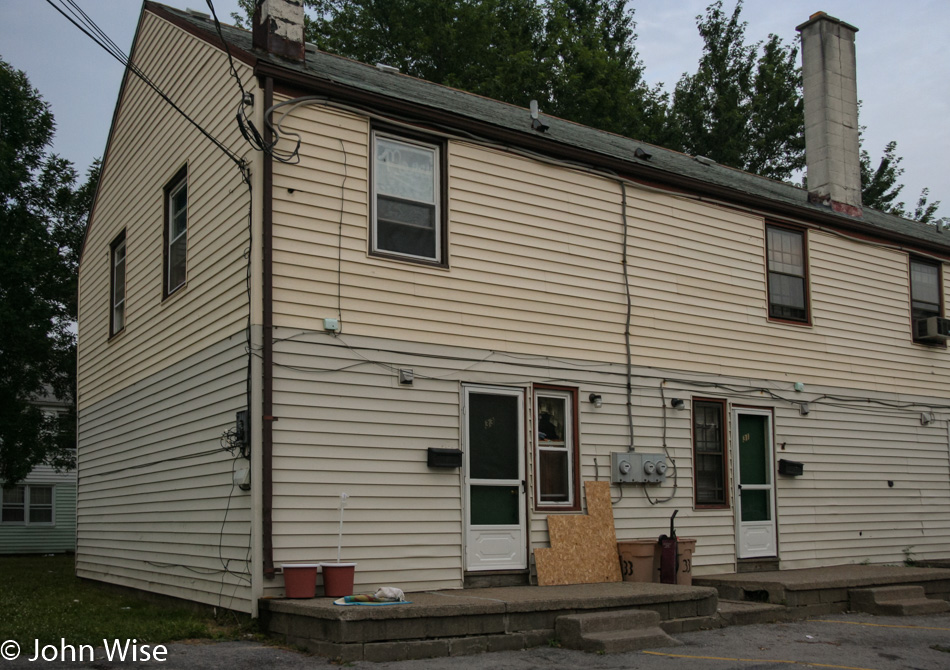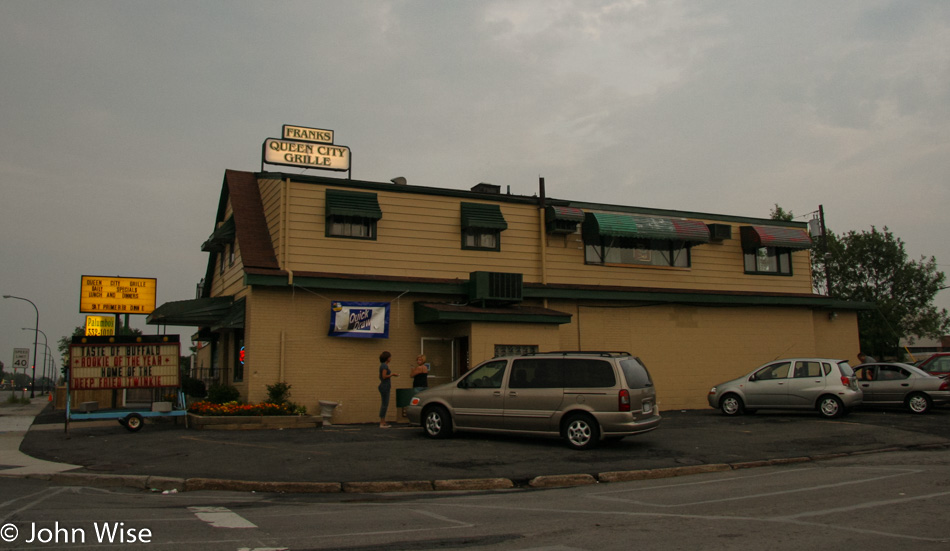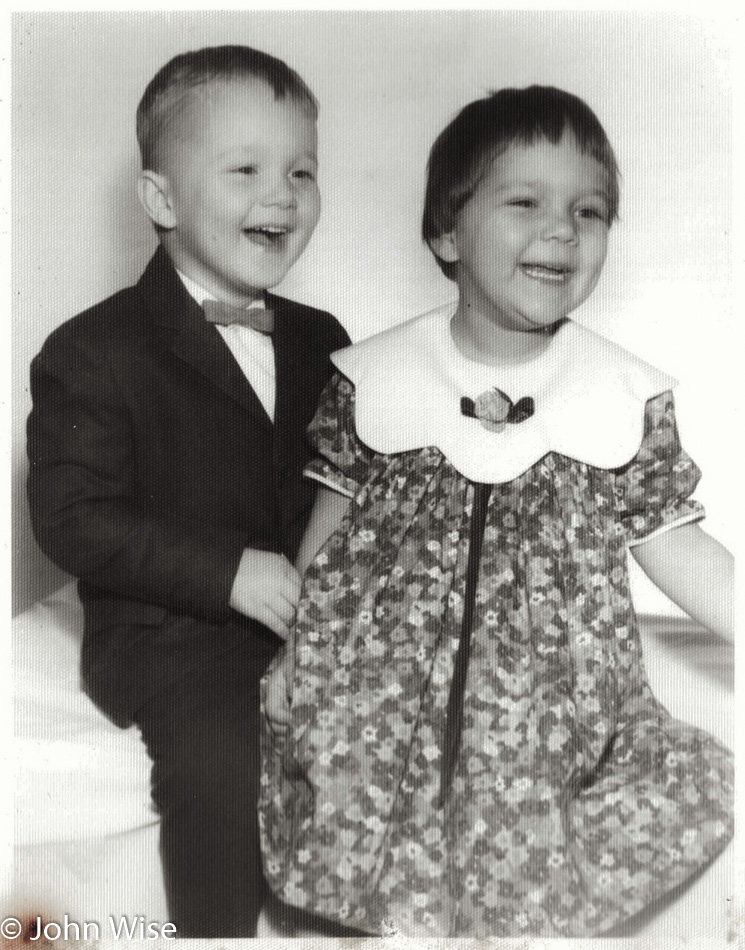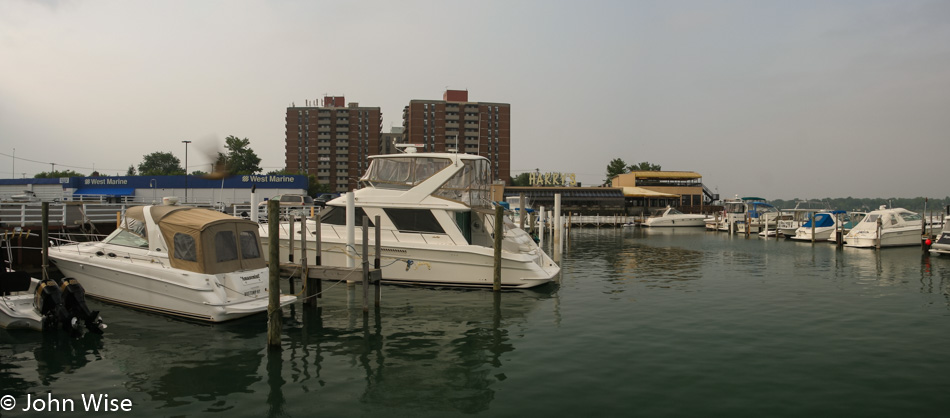
Buffalo is dismal. Breakfast was equally dismal. How can my mom have fond memories of Tim Hortons? I wish Kelly’s Country Store over on Grand Island had been open early as at least I had great memories of that place from my youth, while Tim Hortons has left me with scars. As the day went on, our bad doughnuts and sour orange juice, in retrospect, seemed appropriate for the taste Buffalo would leave in my mouth. Even here at the Harbour Place Marine, where my grandfather had docked his yacht, and at the once elegant restaurant where my mother tells me I first ate frog’s legs, the shine is gone.
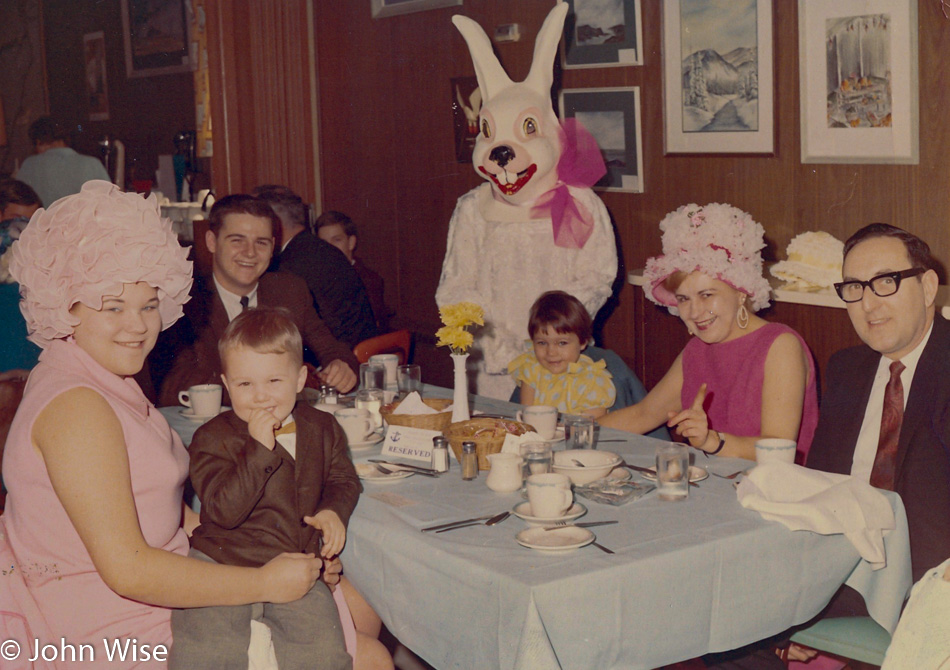
Speaking of those good old days in Buffalo, here we are on Easter in 1966 at that once elegant restaurant I mentioned, which was then known as Jafco Marina & Restaurant. I’m sitting in my mom’s lap (please don’t ask me to explain the shower cap), and my father is on her left. My sister Shari sits in front of Horror Bunny, and that’s my Grandma Hazel and Grandpa Herbert on the right.
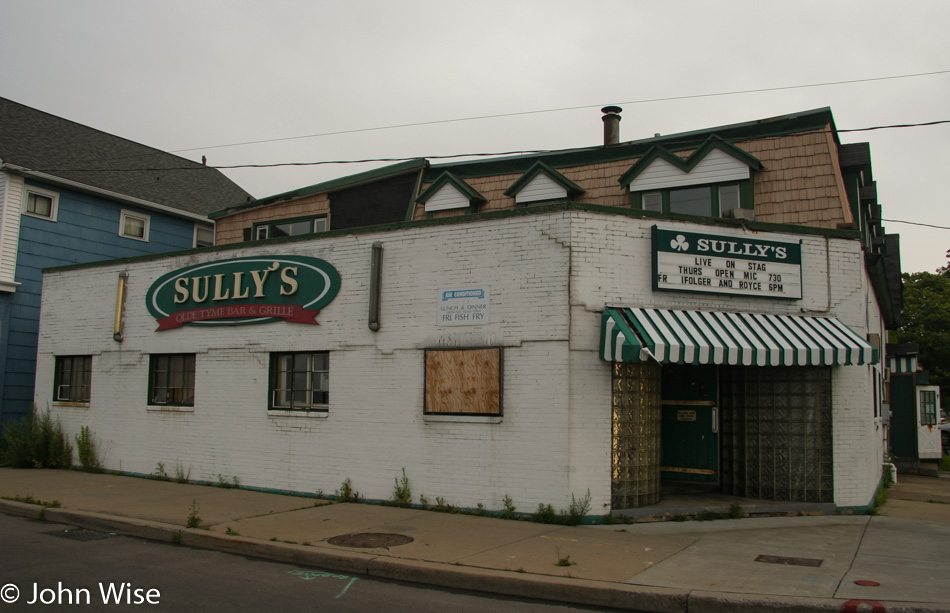
We drive along the Niagara River on River Road on our way to more of Mom’s old favs. Next up was Sully’s Olde Tyme Bar & Grille, which only closed up shop the year before. We know this because the front door was open, and I stepped in. Sully’s is where my mom was introduced to beef on weck, which is a Buffalo favorite of sliced roast beef served on a kimmelweck roll with gravy and horseradish. A kimmelweck is a bun with rock salt and caraway seeds on top. The new owner picked up the place for the view for a little more than $40,000. A corner lot with an unimpeded view of the Niagara River is a great view for sure, but the building is approaching 200 years of age! It was apparently originally used as a mule rest stop and feeding area when the Erie Canal was still running in front of the place. Today, the Erie Canal in this area has been replaced with a parkway.
Nostalgia can be a wicked shovel digging up a past better left alone. As we drove north on River Road, we approached a factory where both my father and Aunt Anne once worked, DuPont. Here we are in Tonawanda, digging into mom’s history when she has the brilliant idea of taking a photo of the place to share with my great aunt back in Santa Barbara, California. Good idea, Mom, let me just jump out of the car and start snapping photos of this chemical factory in post-9/11 America. At the time I made the quick and likely unsafe left turn and parked illegally on the corner, I was oblivious to the situation I was creating. But upon getting back in the car and starting to pull away, a police officer must have been seeing reality differently than I was and figured I needed a wake-up call with some early morning disco lights and siren action.
Those lights spelled party time. “What are you doing?” was the first question the officer posed to me. “I know this looks bad, probably really bad. I hadn’t thought about just how dumb it must look with me jumping out of an illegally parked car to snap photos of a chemical factory, but I do now.” He takes my driver’s license, the registration, and my camera back to his car as another officer pulls in behind the first one. The second officer approaches after conferring with the first and asks what we are doing. We explain the Bocce Club, Texas Red Hots, fresh raspberries, Anderson’s, Perry’s, pilgrimage to the place of our birth and, in the same breath, apologize for the momentary cranial disconnect in causing them more work as I stupidly took photos that in quick hindsight was obviously a bad idea.
The original officer came back, giving back the camera, my license, the registration, and even an apology for keeping us; I was surprised. A mild admonishment was delivered with further warnings to stay away from old factory facilities. While sitting there, I was nearly certain I was about to be tasered, dragged from the automobile, and taken downtown for further questioning before ending up in the hoosegow for the night. Hmmm, I’ve probably watched too many bad movies as nothing like that happened.
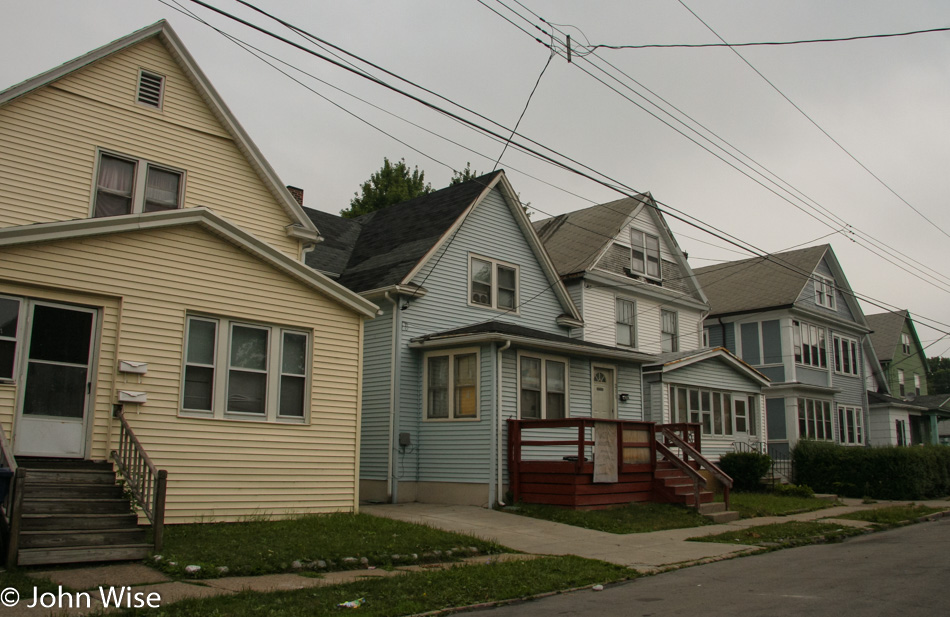
Time to move into the suburbs over on Chadduck and Condon Avenues, where Grandma and Grandpa Kurchoff lived before buying the house on Nadon Place.
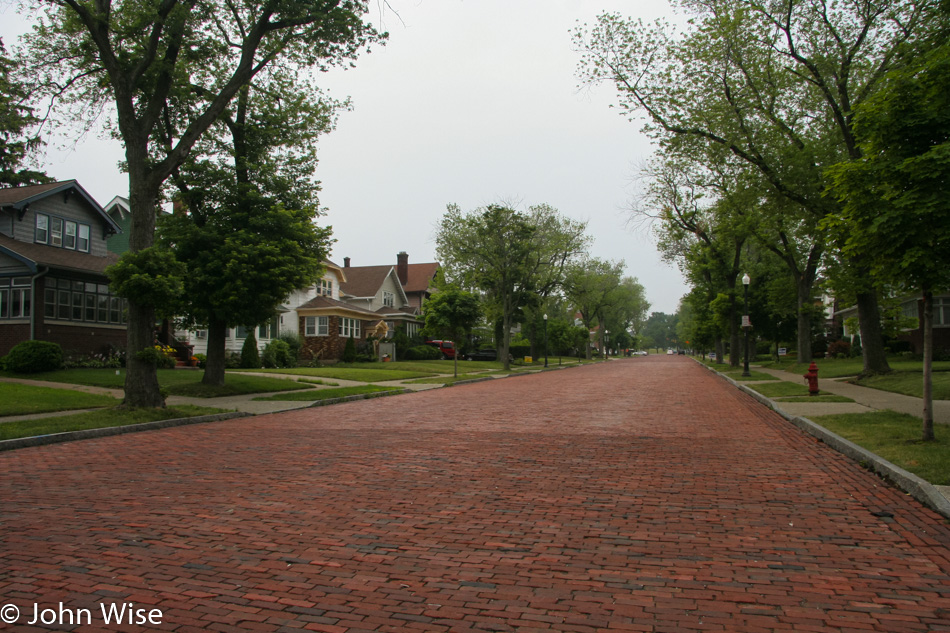
We drove through random neighborhoods where I could briefly entertain thoughts of how cool it would be to live in this area until you turn a corner and reenter the city in a place that looks as if the zombie apocalypse is most likely to begin here. Well, this place or Detroit, but then again, I suppose parts of Indiana should be a contender for that honor, too. If it isn’t the constant reminders of decay and poverty we encounter around far too many corners; then it’s the threat of some of the most hostile winter weather America sees right here next to Lake Erie that should keep one on one’s toes should one find oneself being seduced by Buffalo.
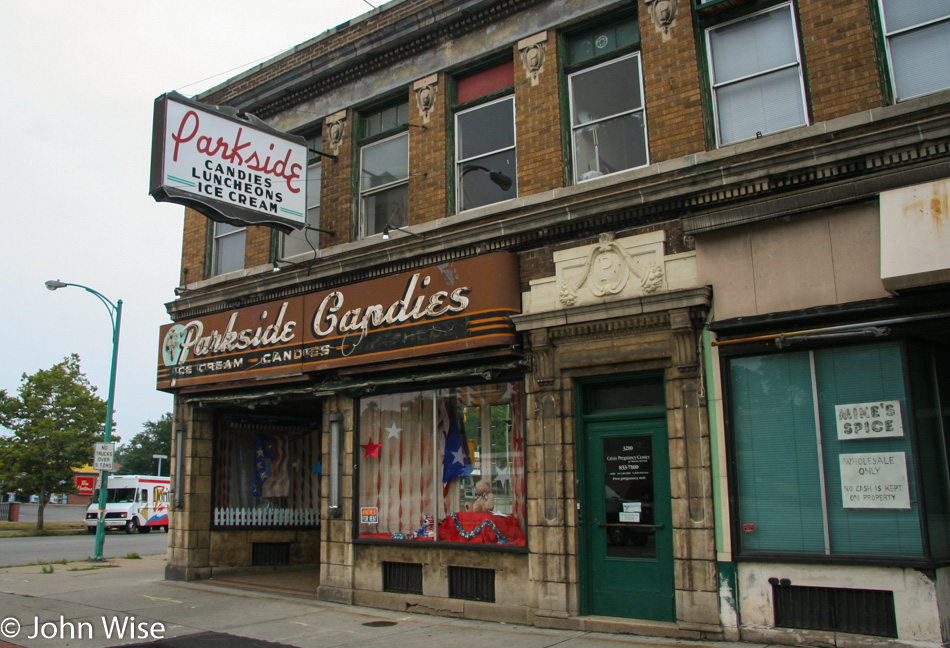
Founded in 1927 and still surviving to this day is Parkside Candy. We would have stopped had they been open, but this being Sunday, most places are either closed or open late. We don’t have time to mess around as we are on the crawl for all the things my mom needs to see in order for her to feel she’s had a full Buffalo experience. So, we continue our drive into history.
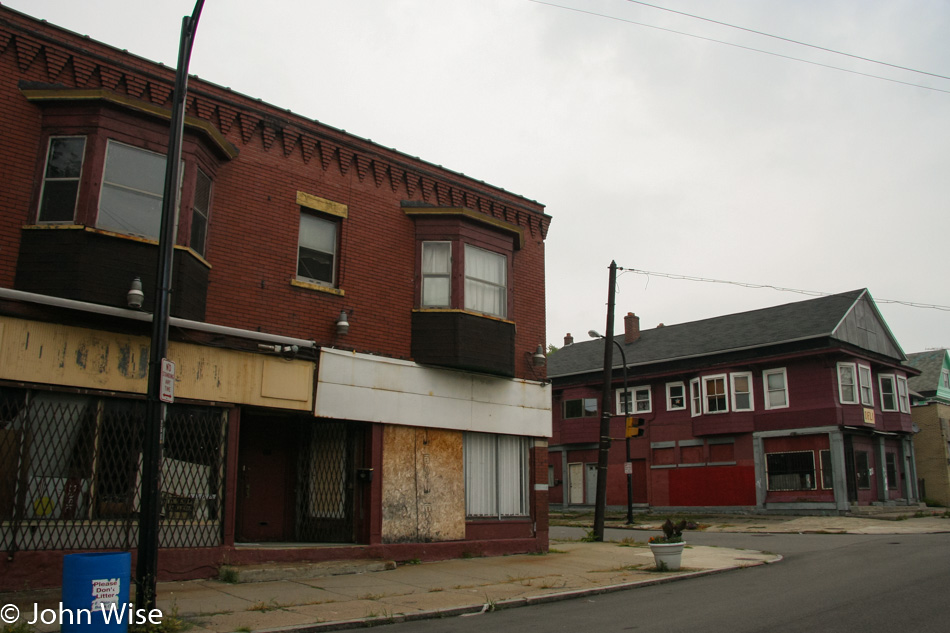
The poverty seen here has infiltrated the entire greater Buffalo area. You never know from one corner to the next where filth and decrepitude will give way to what in some corners of the country would be million-dollar homes. This might be normal to people who’ve grown up here, but to me, there’s an element of anxiety that comes with my knowledge that people have to endure this oppressive, crushing environment.
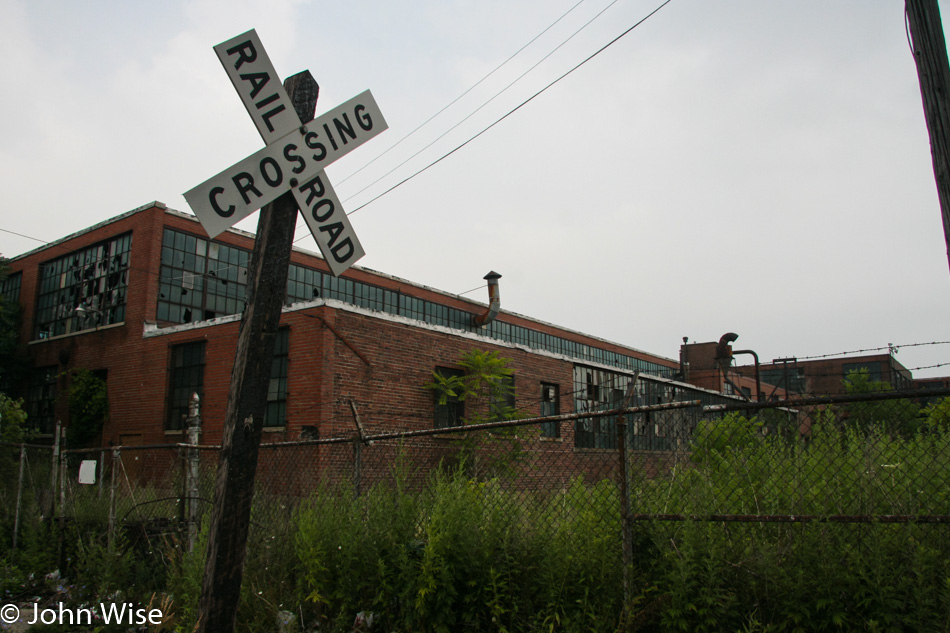
Not happy with nearly getting in trouble at one factory we end up at a derelict old General Electric ruin. This is where our aunt Eleanor worked from an early age all the way through retirement. This factory made transistors ceasing operations somewhere during the early 70s. No one approached us to stop taking photos, though I was cautious that someone would run by and try stealing my camera or carjack the van.
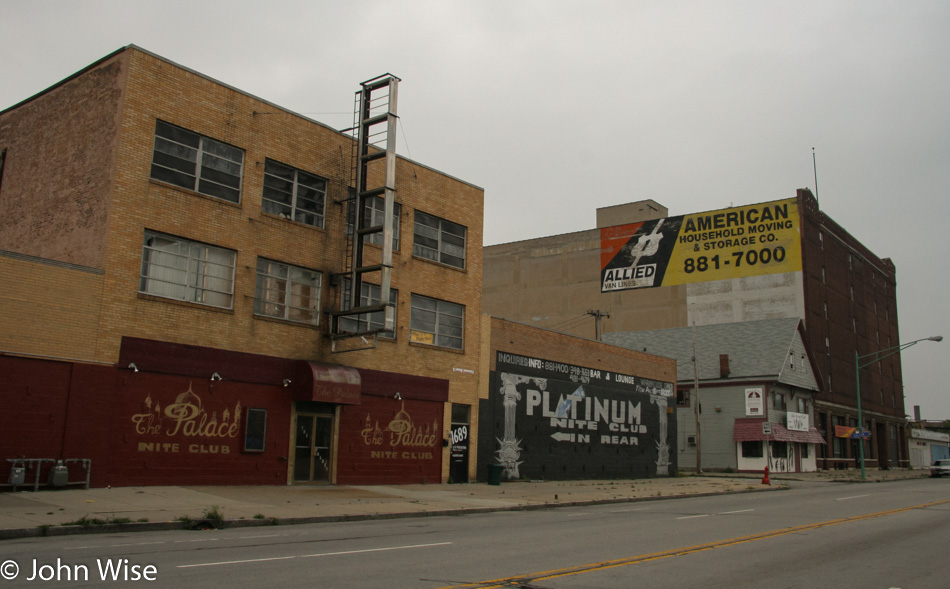
We are on Main Street, which runs from downtown to the South Campus of the University of Buffalo. Not much to be said for wide swaths of this city approaching collapse.
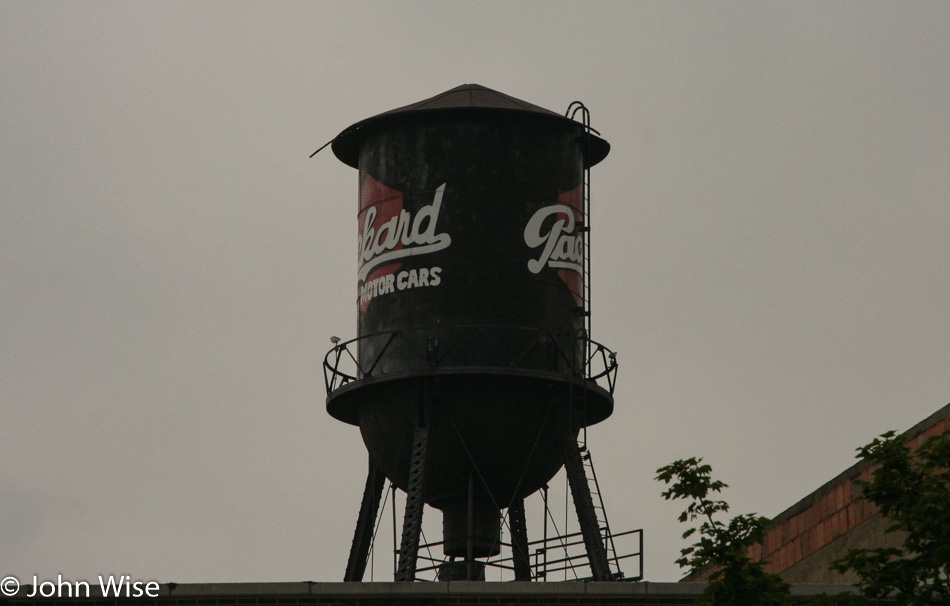
Under this water tower was a Packard assembly plant with a showroom out front. When we were in town, the building was being used as a warehouse. Somewhere during the time we visited and today in 2019, the old Packard building complex has been converted to low-cost affordable housing.
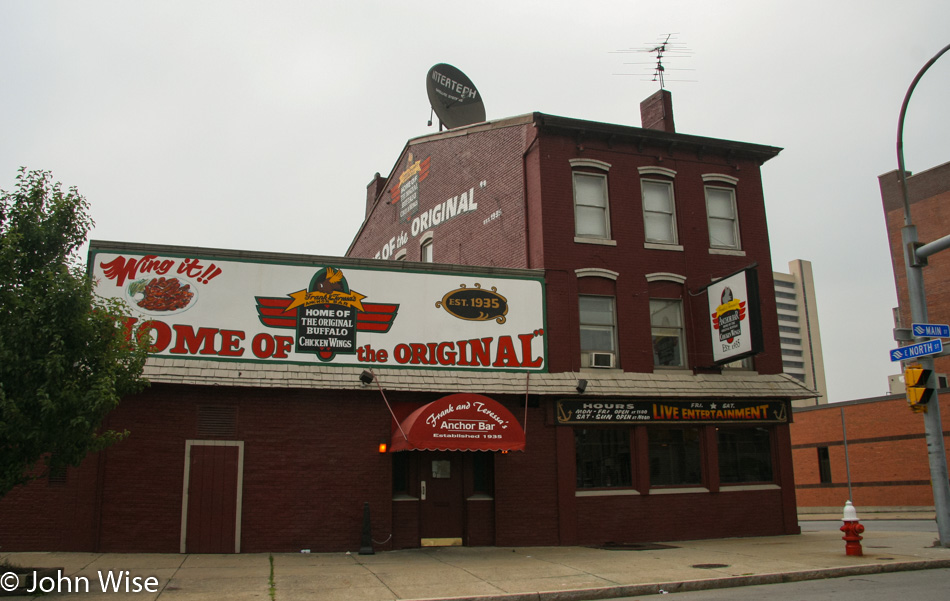
The Anchor Bar, where my mom swears that co-owner Teressa taught her how to make Buffalo Wings back in the early 70s. In 1980, when I moved to Arizona, I’d never heard of the things in Los Angeles, but in this state right next to California, there were a few restaurants that were already serving wings at their pizza places. Using Frank’s Redhot Sauce, butter, and vinegar, my mom would make wings that beat just about everybody else’s for great taste. You see, my mother was prone to exaggeration and hyperbole (which some people might call bullshit), but I can tell you, due to me being afflicted with the same problem, that it’s likely mostly true that my mom learned to make wings right here at the Anchor Bar. Was it really from the woman who actually invented them, though? I’ll never know.
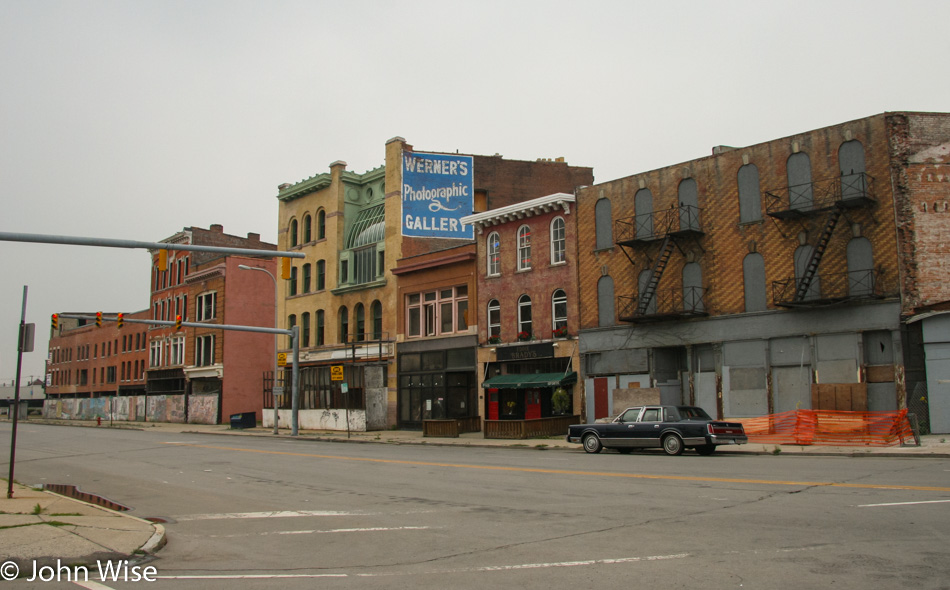
Mom had read some good things about Eddie Brady’s on Chippewa and Genesee Streets, but as luck would have it, they are closed on Sundays. I have to say that on this gray day with a big black old Cadillac parked on the street with a bunch of boarded-up collapsing buildings surrounding Eddie’s, I was happy this deserted part of Buffalo seemed to be screaming to get out of here. I was nearly certain that there was some bound and gagged stooly in the trunk who was on their way to the river. Fifteen years later, I’m looking on Google Maps, and the area has been renovated. I’d stop in now in a heartbeat.
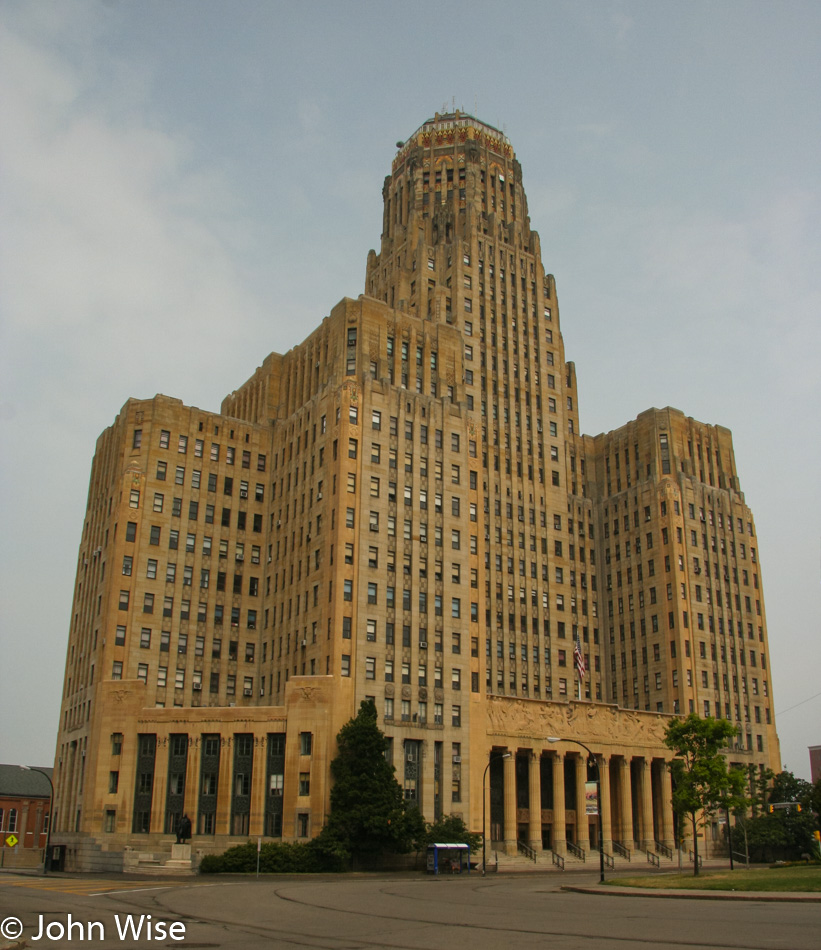
Buffalo City Hall is a giant 32-story reminder of the grandeur and economic position this city once held. Not only was it home to the Barcalounger Chair and singer Rick James but it was the first city with electric street lights; the Pony Express and American Express were founded in Buffalo. In 1901, the city had more than 200 miles of paved roads, more than any other city on earth, and at one time, it had 60 millionaires living here, which was more than in any other city in America.
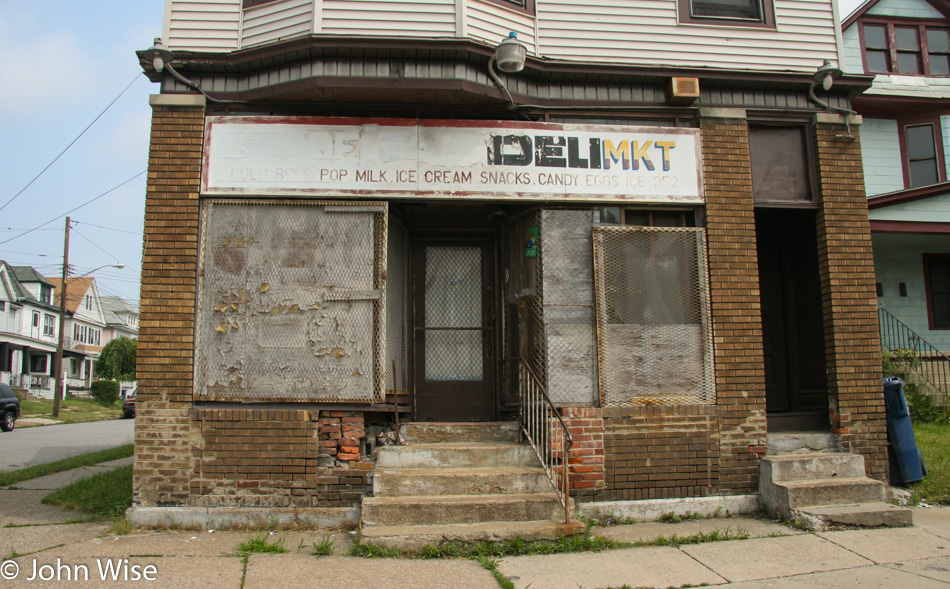
Buffalo today is a shadow of its former self. Declining standards in education, lack of investment in its population, and rising racism started driving people out of Buffalo decades ago with subsequent declines of investments in human capital that fed poverty and racism, creating a cycle that would guarantee that the city would never recover. The population is half the size it was at the height of its prosperity, and what can be easily gleaned from this catastrophic failure is that the acceptance of mediocrity in telling the average Joe that good enough is just that, is actually a recipe for a disaster that looks like this city.
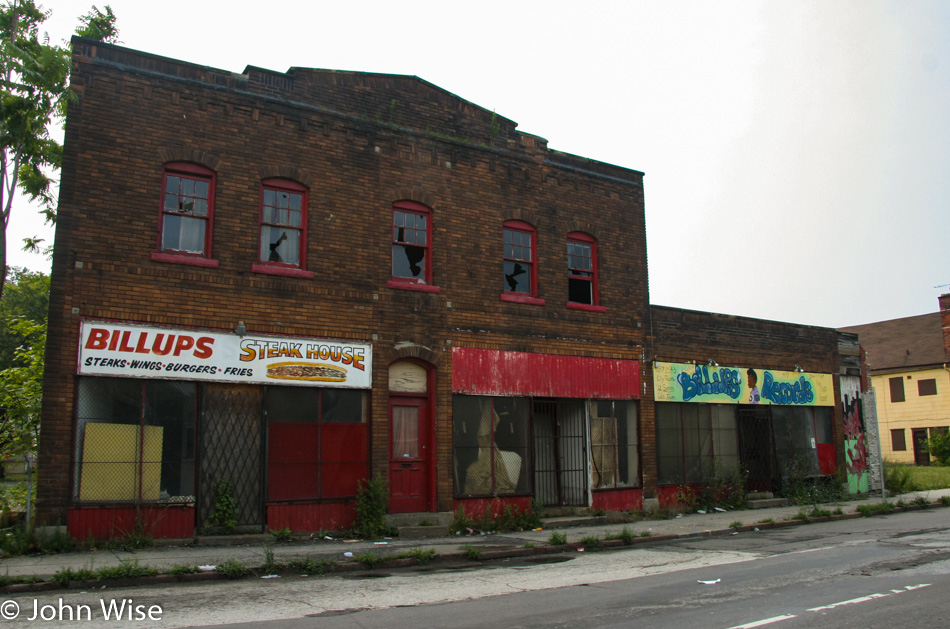
If this is the face of stupid decisions where local attitudes played down the intellectual needs of a city to advance economically in our age, what will our country look like in the near future as this mentality of being just good enough and damning those who don’t go along with our jingoistic pride spreads cancer like across our country? It’s not good enough that tiny pockets of prosperity keep the glimmer of hope alive with thinking that we can turn something around and drag the decaying malaise out of its gutter. We must get off our knees in front of the altar of football and wings and start praying to the tools that offer education, but that’s a silly pipedream proven by this slum that overtook the aspirations of Billups Steakhouse and over 50% of the population of this once great city.
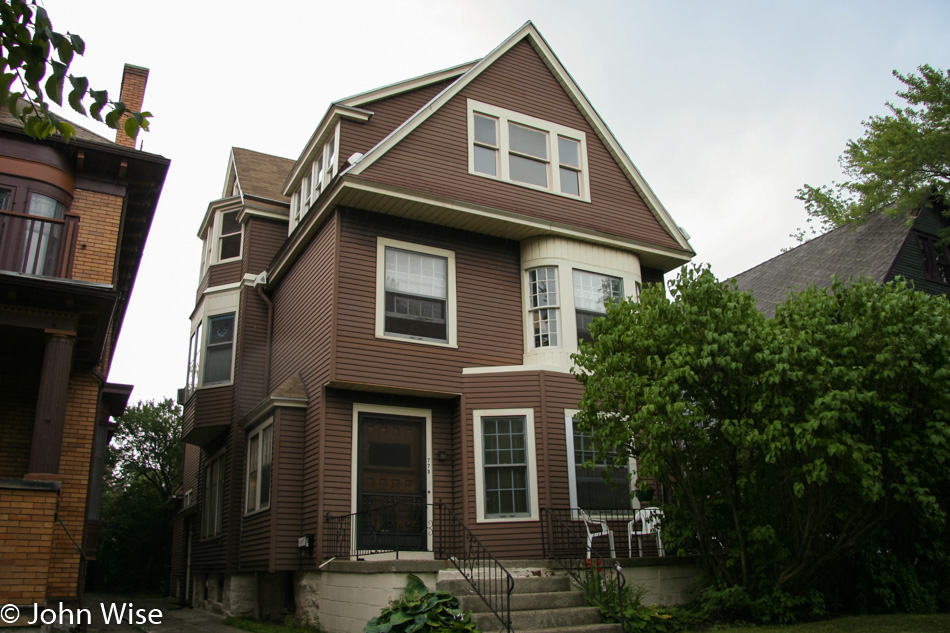
We stop on Richmond Avenue to visit Auntie’s old house. It’s still brown; a new owner bought it a year ago for about $160,000. Three stories and a basement, the price is so low it shocks me. We are invited in for a quick look around; wow, never in my wildest dreams would I have imagined I’d ever step back into a place I lived in 37 years ago. If this house had been in San Francisco, New York City, or Pacific Palisades, it would have sold for millions, but who wants to live in Buffalo, no matter how cheap it might be?
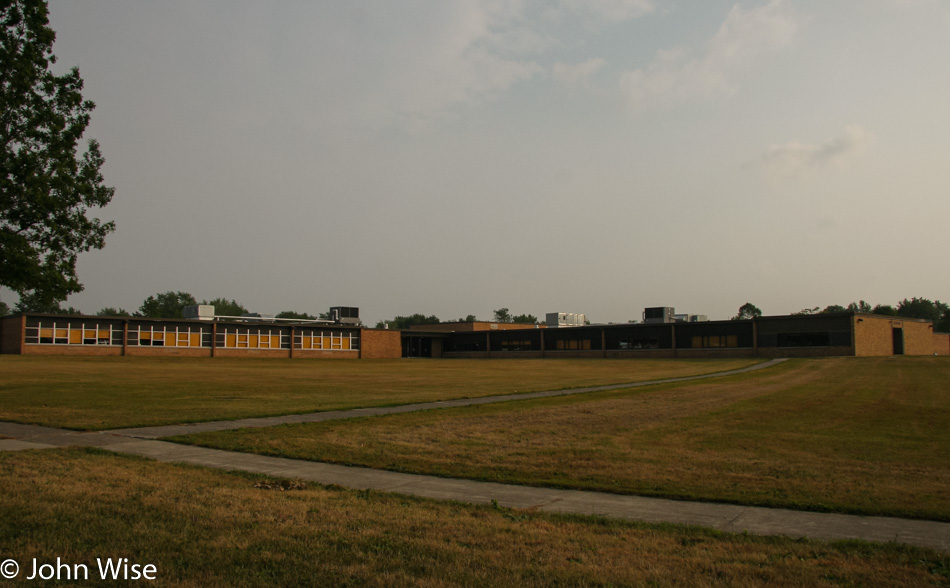
We visit old schools mom, my father, or I attended, old houses we lived in, the places we ate at, and all I hear are the echoes of tragedy. Grandma and Grandpa’s old business locations are gone; an old dairy where my great-grandfather operated his business is an abandoned shell. What’s left is an infrastructure to produce more poverty and more intolerance.
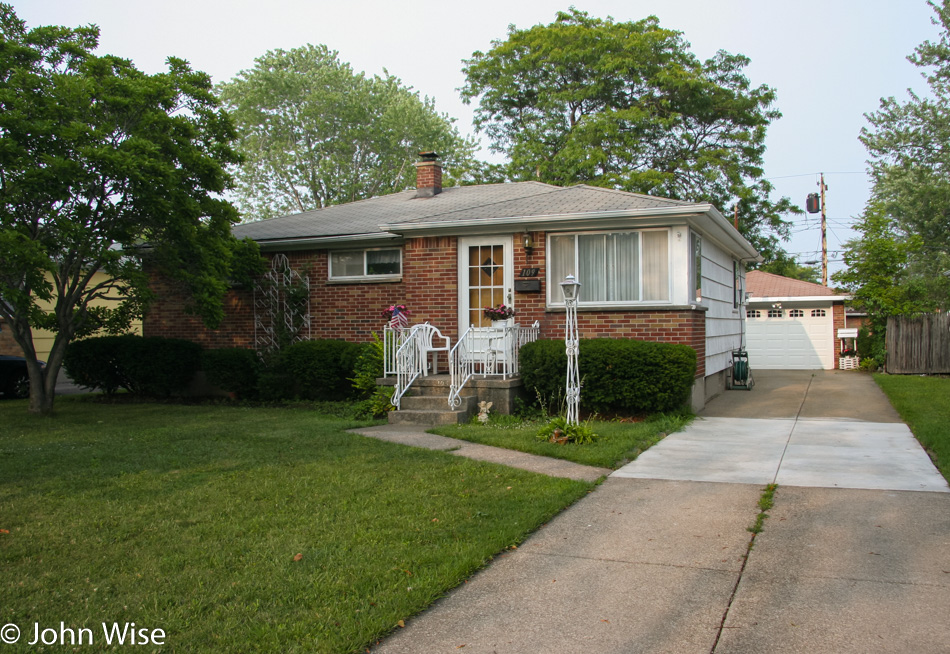
We tried visiting my aunt Lillian, who lives here in Eggertsville, in the same house her parents lived in. Fortunately, she wasn’t home. It was my mom’s idea to surprise her as she said she and my aunt had always gotten along well. I didn’t want to squash that idea, and I figured Lillian would be polite enough, but I don’t think my mom understood how the vitriol she spewed against my father had a toxic effect that poisoned any goodwill that this side of the family might have once held for my mother. How is it that people are able to live through the decades carrying such bitterness with them?
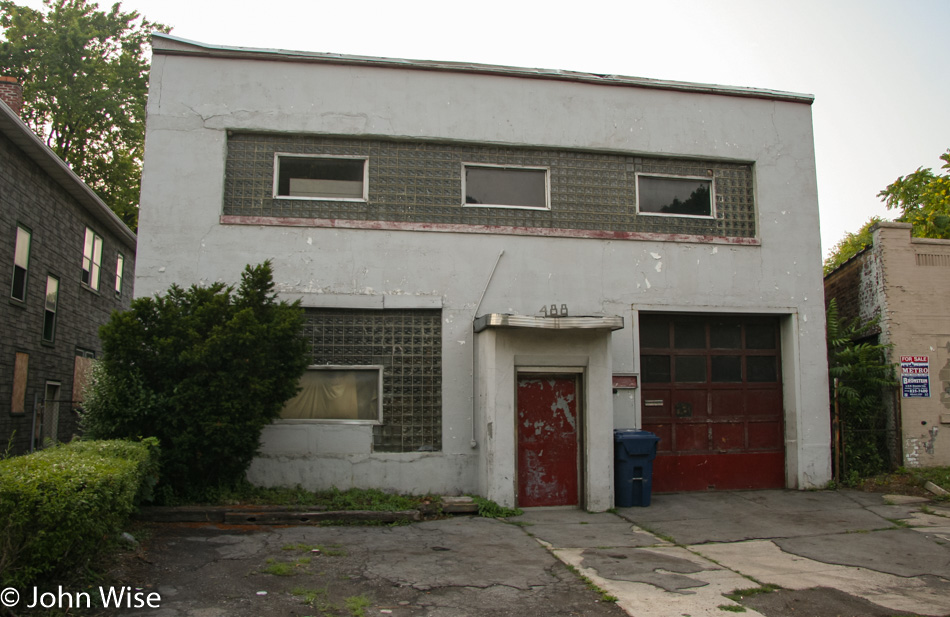
A long time ago, about 100 years prior to today, one of my maternal great-grandfathers operated a dairy from this location. His horse-drawn cart would be parked in the garage. So says my mother.
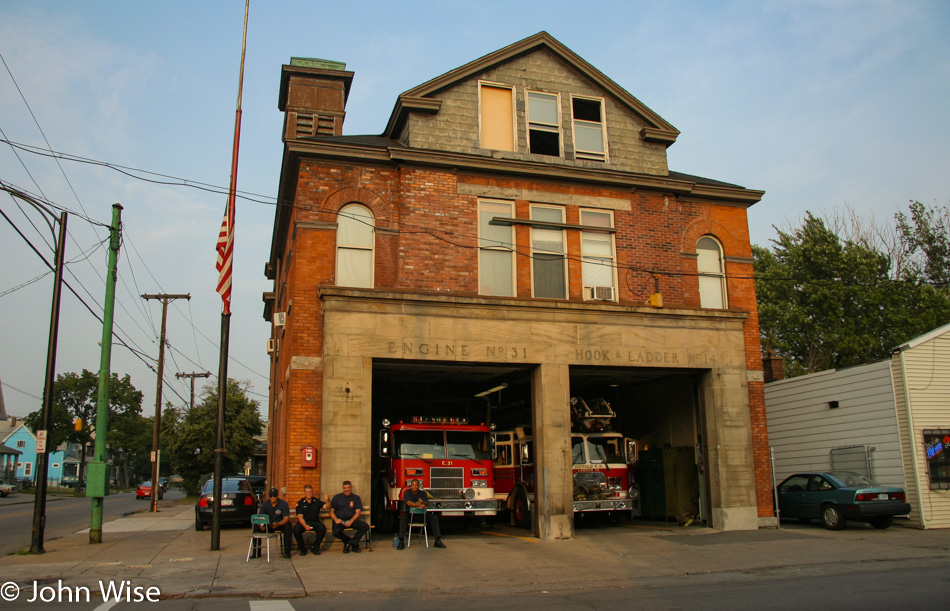
Mom has a particular affinity for many of Buffalo’s old buildings, as the Kurchoff family name is stamped on a few of them. My ancestors had something to do with the painting and construction of more than a couple of Buffalo’s landmark buildings.
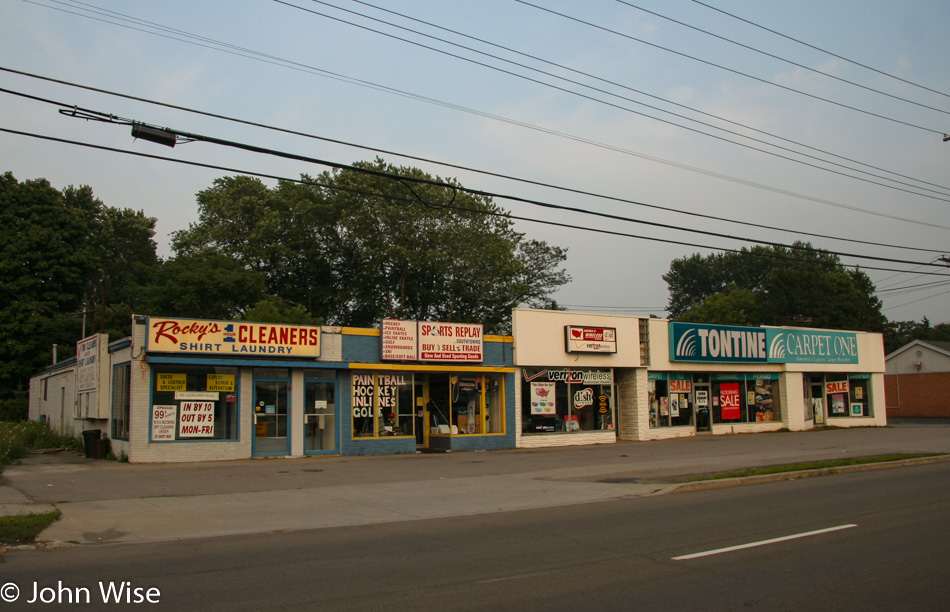
There, on 1079 Union Road, at Sports Replay (which is now a Cricket Wireless shop as of this writing), once sat the shop owned by my grandmother Hazel Kurchoff. From this location in West Seneca, she was a consultant on interior design and would even make curtains and reupholster furniture for clients while Grandpa Herbie took care of woodworking and painting for clients. The family had survived the Great Depression and started regrowing their wealth, though a large piece of it was lost when an unscrupulous accountant made off with the majority of their savings in the 1970s and was never apprehended. The house on Rochester was sold by my aunt, who used the money to buy her place in Bradenton, Florida, followed by the family selling a cottage down on Lake Erie in the community of Angola, and then the house on Nadon before most everyone had relocated either to Florida or Arizona.

Worn out, we take a hotel early and fall to sleep with a much-needed nap. The Anchor Motel is on River Road south of Niagara Falls and only a mile and a half from the infamous Love Canal area. Before napping, the owner of the Anchor Motel gave us directions to Old Greenwalls for what he believed was great beef on weck. We got turned around, requiring help from Caroline in Arizona. On finding Old Greenwalls, we agreed that the sandwich was decent but not the best. Some ducks are nearly within petting distance and obviously used to a routine, so we oblige them with fries and old bread. Nearby, a squirrel shimmies up a trashcan, pilfering the Bocce Club pizza we just dumped that we’d been carrying around. A scoop of Perry’s Vanilla ice cream completes dinner.
To close out the day, I’d like to visit Niagara Falls, but Mom only reluctantly agrees to go. I guess with no great food stands and this having been an obligatory destination for visitors from out of town when my mom was a kid; there’s some kind of super-uncool factor going on here. That or she had once contemplated ending it by flinging herself over the edge. With someone not really interested in what I wanted to do, it was easy enough to snap a quick photo on the American side of the falls and return to the hotel.

